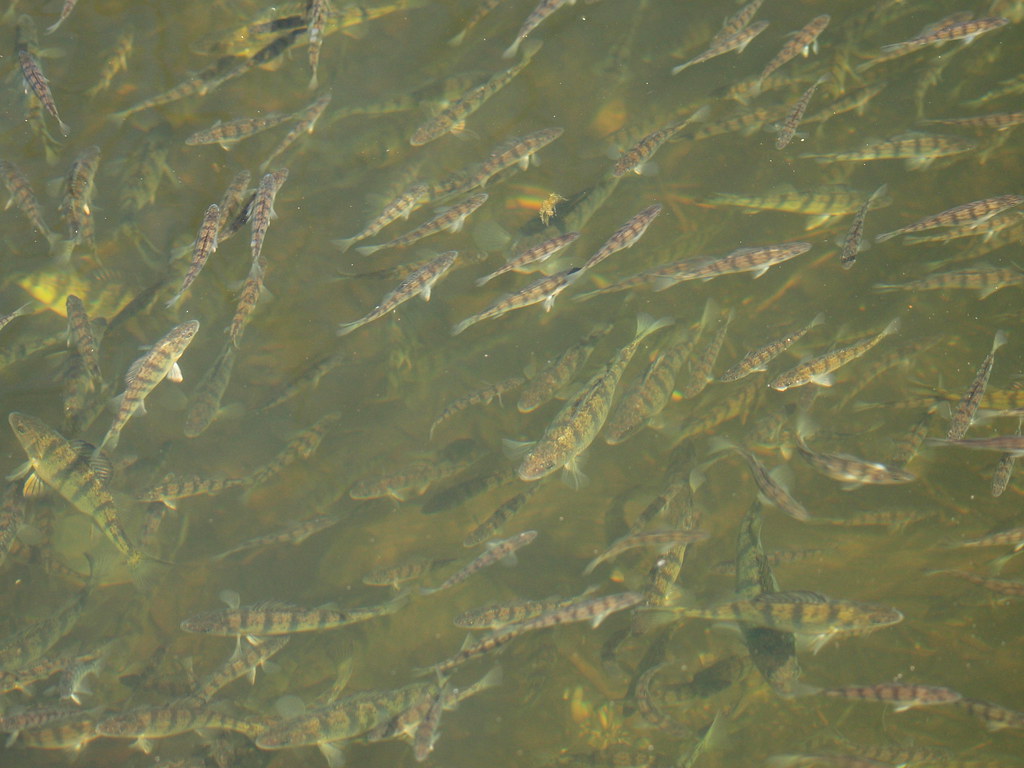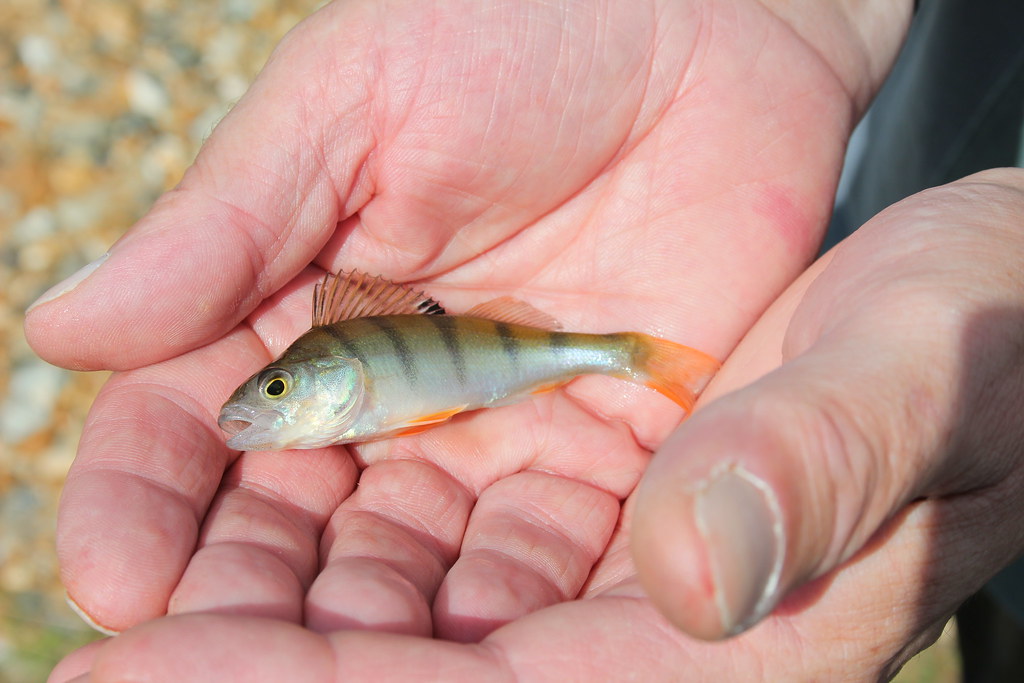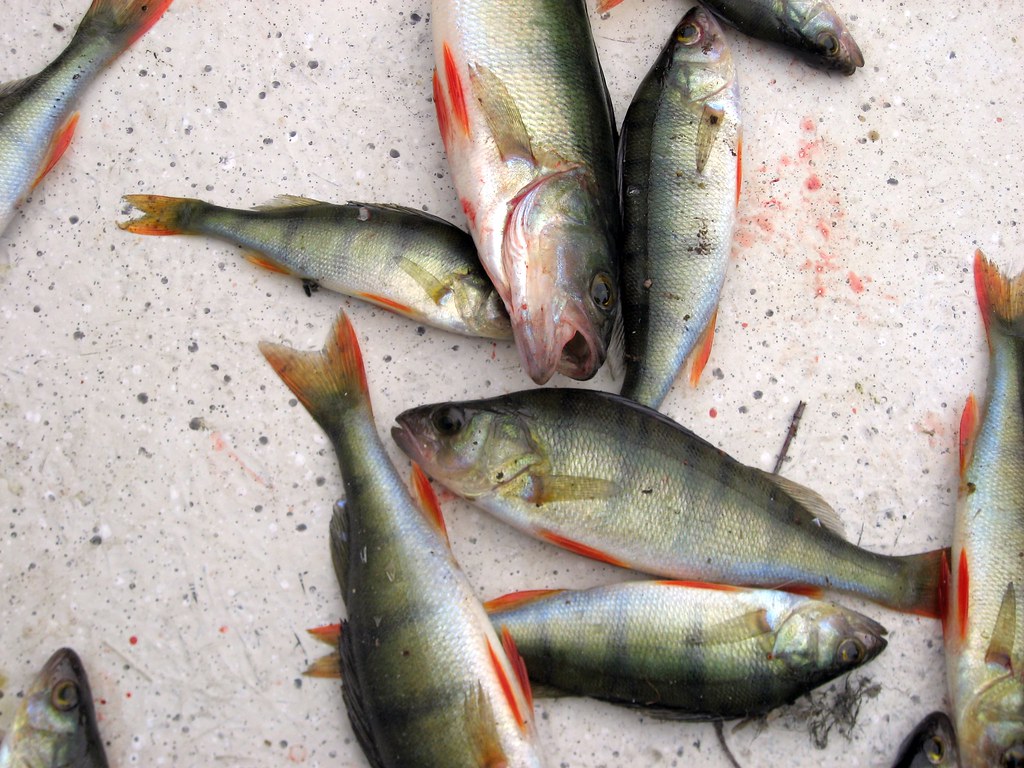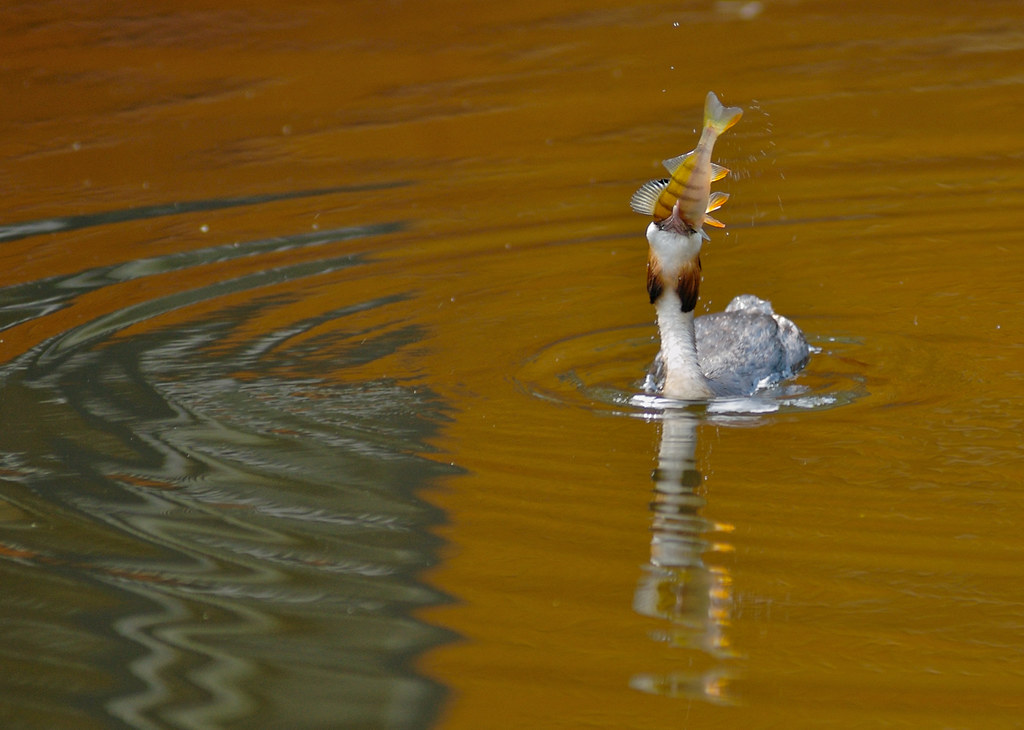Perch
Perca fluviatilis
A prickly yet colorful local fish, the local perch is greenish, with dark stripes and red fins. They have five to eight dark vertical bars on their sides. When the perch grows larger, it develops a hump between its head and dorsal fin. Its dorsal fin consists of strong sharp rays that make for excellent defense. Its body is covered with small, jagged, deeply embedded scales. It is widely found in fresh and brackish waters, in flowing waters, but it particularly favors lakes, where it does not have to struggle against any currents.
European perch can vary greatly in size between bodies of water. The maximum recorded length is 60 cm. As of May 2016, the official size record recognized by the International Game Fish Association (IGFA) stands at 2.9 kg.
The perch is a predatory species. Juveniles feed on zooplankton and small invertebrate fauna, while adults feed on both invertebrates and fish.
They spawn between February and July, laying their roe on water plants or the branches of trees or shrubs immersed in the water.

Photographer: Ramendan

Photographer: CJ Isherwood
Un pește destul de colorat dar cam țepos, bibanul are o nuanță verde, cu dungi întunecate și înotătoare roșii. Au cinci până la opt dungi verticale, de un verde închis, pe părțile laterale. Atunci când bibanul crește mai mare, dezvoltă un soi de cocoașă între cap și înotătoarea dorsală. Înotătoarea dorsală arată ca o serie de raze puternice și ascuțite, care asigură o apărare excelentă. Corpul său este acoperit cu solzi mici, duri, înconvoiați, și bine prinși de corp. Se găsește adesea în ape dulci și salmastre ori în ape curgătoare, dar preferă în special lacurile, unde nu trebuie să lupte împotriva unor curenți puternici.
Bibanul poate varia considerabil în dimensiune. Lungimea maximă înregistrată este de 60 cm. Începând cu mai 2016, recordul oficial de dimensiune recunoscut de Asociația Internațională de Pescuit Sportiv (IGFA) este de 2,9 kg.
Bibanul este o specie răpitoare. exemplarele tinere se hrănesc cu zooplancton și nevertebrate mici, în timp ce adulții se hrănesc atât cu nevertebrate, cât și cu alți pești. Se reproduc între februarie și iulie, depunând icrele pe plante acvatice sau pe ramurile copacilor sau arbuștilor scufundați în apă.
Biban
Perca fluviatilis
Flussbarsch
Perca fluviatilis
Der einheimische Barsch ist ein stacheliger, aber farbenfroher Fisch. Er ist grünlich, hat dunkle Streifen und rote Flossen. Er hat fünf bis acht dunkle vertikale Streifen an den Seiten. Wenn der Barsch größer wird, entwickelt er einen Buckel zwischen Kopf und Rückenflosse. Seine Rückenflosse besteht aus starken, scharfen Strahlen, mit denen er sich hervorragend verteidigen kann. Sein Körper ist mit kleinen, gezackten, tief sitzenden Schuppen bedeckt. Er ist in Süß- und Brackwasser in fließenden Gewässern weit verbreitet, bevorzugt aber Seen, wo er nicht gegen Strömungen ankämpfen muss.
Die Größe des Flussbarsches kann von Gewässer zu Gewässer stark variieren. Die maximal gemessene Länge beträgt 60 cm. Der offizielle, von der International Game Fish Association (IGFA) anerkannte Größenrekord liegt bei 2,9 kg (Stand: Mai 2016).
Der Barsch ist eine räuberische Art. Die Jungfische ernähren sich von Zooplankton und kleinen wirbellosen Tieren, während sich die ausgewachsenen Fische sowohl von wirbellosen Tieren als auch von Fischen ernähren.
Sie laichen zwischen Februar und Juli und legen ihren Rogen an Wasserpflanzen oder an den Zweigen von Bäumen oder Sträuchern ab, die ins Wasser getaucht sind.

Photographer: Mrs Gemstone

Photographer: Frank van de Velde
Poisson local épineux mais coloré, la perche locale est verdâtre, avec des rayures sombres et des nageoires rouges. Ils ont cinq à huit barres verticales sombres sur leurs côtés. Lorsque la perche commune grossit, elle développe une bosse entre sa tête et sa nageoire dorsale. Sa nageoire dorsale est constituée de solides rayons pointus qui lui confèrent une excellente défense. Son corps est couvert de petites écailles dentelées profondément enfoncées. On le trouve largement dans les eaux douces et saumâtres, dans les eaux vives, mais il affectionne particulièrement les lacs, où il n’a à lutter contre aucun courant.
La taille de la perche européenne peut varier considérablement d’un plan d’eau à l’autre. La longueur maximale enregistrée est de 60 cm. En mai 2016, le record de taille officiel reconnu par l’International Game Fish Association (IGFA) est de 2,9 kg.
La perche commune est une espèce prédatrice. Les juvéniles se nourrissent de zooplancton et de petite faune d’invertébrés, tandis que les adultes se nourrissent à la fois d’invertébrés et de poissons.
Ils pondent entre février et juillet, pondant leurs œufs sur des plantes aquatiques ou sur des branches d’arbres ou d’arbustes immergés dans l’eau.
Perche commune
Perca fluviatilis
Try using these colors:
Remember, there are always more colors than you think you see!







